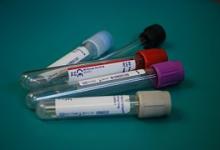Weight Loss as a Therapeutic Goal in Psoriatic Arthritis Save

Psoriatic arthritis (PsA) is a complex inflammatory disease often complicated by obesity, which not only worsens disease activity but also impairs treatment response. At ACR Convergence 2025, three compelling studies spanning pharmacologic, lifestyle, and longitudinal observational data converged on a central theme: weight loss is a powerful modulator of PsA outcomes, regardless of the intervention used.
GLP-1 Receptor Agonists: Real-World Evidence of Dual Benefit (Abstract#2687)
In a retrospective analysis of 48 PsA patients from Toronto and NYU, GLP-1 receptor agonists (GLP-1 RAs), including semaglutide, liraglutide, and tirzepatide, were associated with significant weight loss (mean –6.43 kg, p < 0.0001). This reduction correlated with improvements in systemic inflammation (CRP –1.1 mg/L), pain (–1.0), and triglycerides (–0.35 mmol/L). While group-level changes in DAPSA and global assessments were modest, regression analyses revealed that each 1% reduction in body weight was significantly associated with better DAPSA scores, fewer tender joints, improved EQ-5D, and reductions in LDL and systolic blood pressure. These findings suggest that GLP-1 RAs may offer a dual benefit in PsA—targeting both inflammatory and cardiometabolic pathways.
DIPSA Trial: Diet Type Less Important Than Weight Loss (Abstract#2690)
The Dietary Interventions in Psoriatic Arthritis (DIPSA) randomised controlled trial evaluated two personalised diet strategies, Mediterranean (Med) and low-calorie DASH (DASH-LC), against standard dietary advice in 92 PsA patients with BMI 25–40. Over 24 weeks, all groups experienced modest weight loss (–1.36 to –2.47 kg), with no significant differences between arms. Improvements in DAPSA, pain, fatigue, PsAID, and tender joint counts were observed across all groups. Notably, the magnitude of weight loss—not the assigned diet—was significantly associated with improvements in disease activity and patient-reported outcomes. At week 12, Minimal Disease Activity (MDA) was achieved by 38% in DASH-LC, 29% in Med, and 16% in control, though rates converged by week 24.
Longitudinal Cohort Study: BMI as a Predictor of Treatment Response (Abstract#2691)
In a large PsA cohort (n=1291) followed since 1978, higher BMI was independently associated with lower odds of achieving MDA (OR 0.95; 95% CI 0.94–0.97), particularly among patients treated with TNFi. The impact was most pronounced in subjective and skin-related domains—pain, PASI, global assessments, and HAQ—while swollen joint counts were unaffected. Drug-stratified analyses confirmed that BMI at drug initiation significantly predicted reduced MDA in TNFi users (OR 0.93), but not in those receiving IL-17i, IL-23i, IL-12/23i, JAKi, or PDE4i. These findings underscore the need for weight-sensitive therapeutic strategies and highlight the potential role of psychosocial factors in mediating treatment response.
Weight Loss as a Shared Therapeutic Target
Across pharmacologic, dietary, and observational data, a consistent message emerges: weight loss is a key determinant of clinical improvement in PsA. Whether achieved through GLP-1 RAs, structured dietary programs, or broader lifestyle interventions, reductions in BMI correlate with better disease control, improved patient-reported outcomes, and enhanced cardiometabolic health. These findings advocate for a more integrated, personalised approach to PsA management, one that addresses inflammation, comorbidities, and the metabolic context in which the disease unfolds.










If you are a health practitioner, you may Login/Register to comment.
Due to the nature of these comment forums, only health practitioners are allowed to comment at this time.